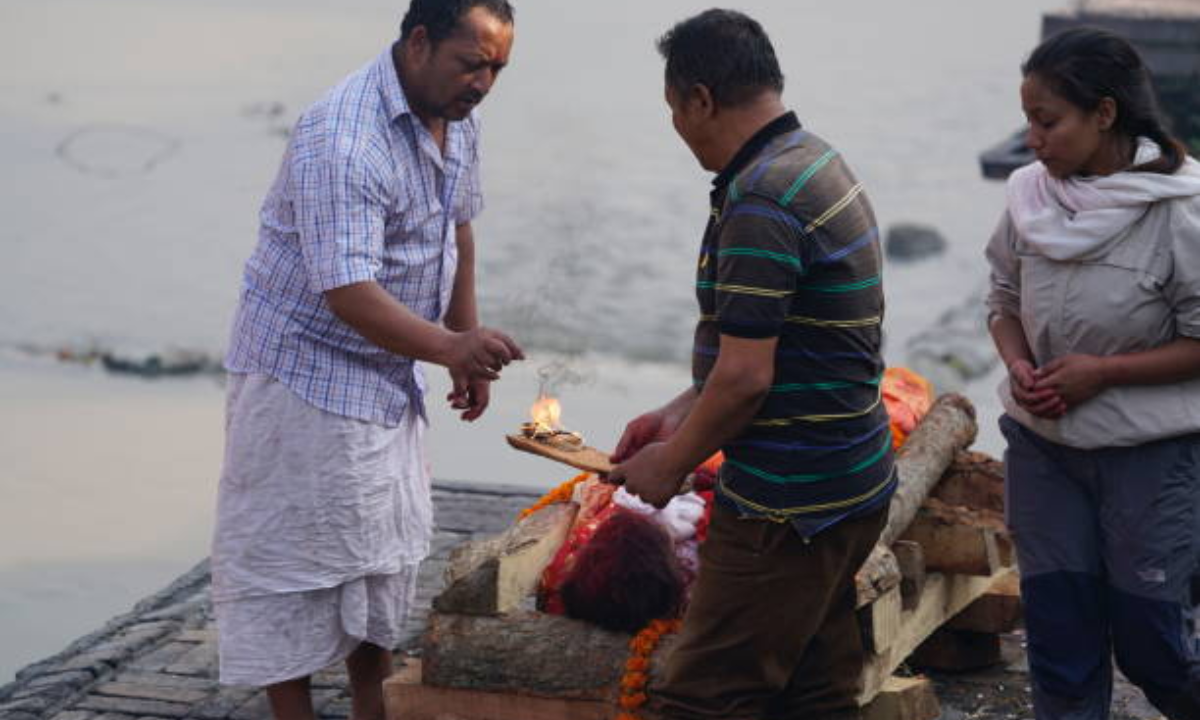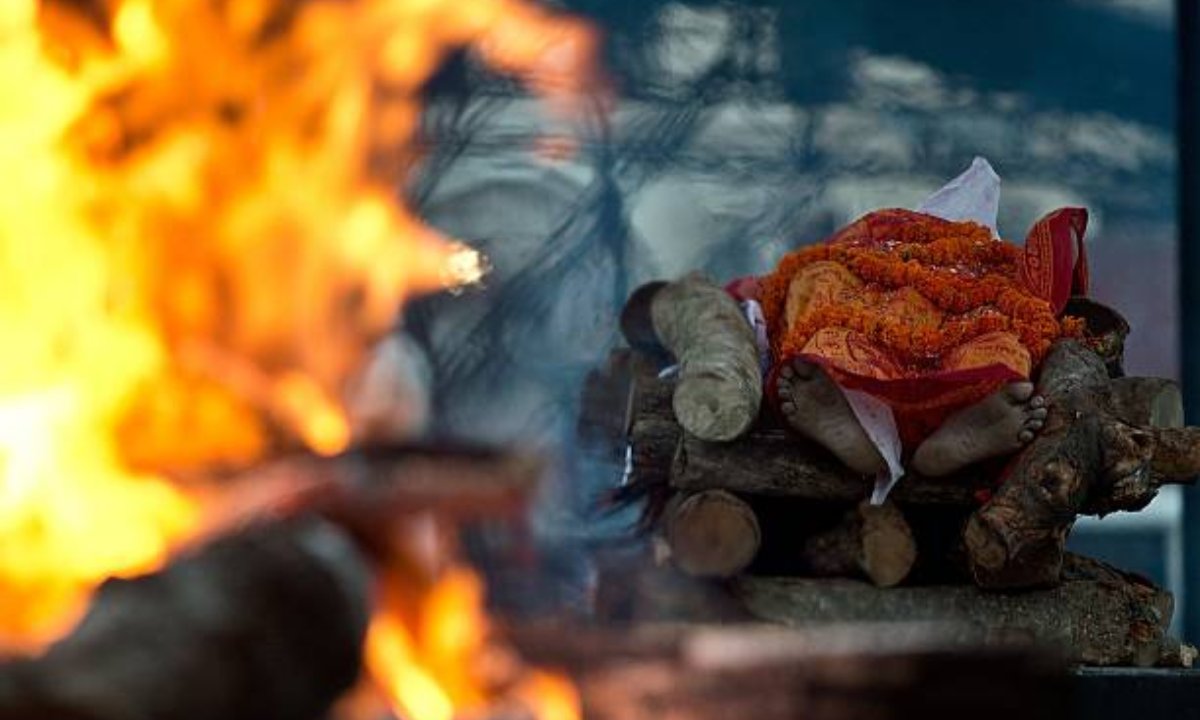Rituals after death hold profound spiritual significance in Hindu culture, guiding the deceased’s soul toward liberation while offering solace to grieving families. The loss of a loved one is an emotional experience, and the death rituals, rooted in ancient traditions, provide a structured way to honor the departed. In cities like Bangalore, modern and traditional practices, facilities like the Wilson Garden Electric Crematorium play a vital role in ensuring these rituals are performed with respect.
This blog delves into the Hindu cremation process, the rituals that follow death, and how cremation services in Bangalore, particularly at Wilson Garden Electric Crematorium, support families during this sacred time.
The Significance of Hindu Cremation

Hinduism, one of the world’s oldest religions, views death as a transition rather than an end. The body is considered a temporary vessel for the soul (Atman), which is eternal and moves through cycles of birth, death, and rebirth (Samsara). The Hindu cremation process is a ritual that facilitates the soul’s release from its earthly form, preparing it for its journey toward liberation (Moksha). Fire, a symbol of purification, plays a central role in this process, as it is believed to sever the soul’s attachment to the physical body, allowing it to return to the five elements—earth, water, fire, air, and space.
In Hindu tradition, cremation is typically performed within 24 hours of death to ensure the soul’s swift release. The process is steeped in rituals that honor the deceased while providing emotional and spiritual support to the family. These rituals vary by region, community, and family customs, but their core purpose remains the same: to guide the soul toward peace and prepare it for its next phase. In urban centers like Bangalore, professional cremation services in Bangalore help families navigate these traditions while accommodating modern constraints.
The Hindu Cremation Process
The Hindu cremation process is a carefully orchestrated series of rituals, often guided by a priest or the eldest male relative, typically the son. Here’s a step-by-step overview of the cremation process, particularly as it is practised in Bangalore:
1. Preparation of the Body
Upon death, the body is brought home or to a designated space, where it is bathed and purified by close family members. This act holds deep symbolic value, representing the sanctification of the body for its spiritual journey. The body is adorned with sandalwood paste (for men) or turmeric (for women), dressed in fresh white clothing symbolising purity, and decorated with garlands of flowers. Rice balls (pinda) or holy basil may be placed near the body as offerings to nourish the soul.
In Bangalore, cremation services in Bangalore, such as those offered by providers like Beleiv assist with these preparations, ensuring that the body is treated with care and respect. They provide essentials like puja samagri (ritual materials), freezer boxes to preserve the body, and transportation to the cremation ground.
2. The Cremation Ceremony
The body is carried feet-first to the cremation site, often accompanied by chants and mantras to guide the soul. At the cremation ground, such as the Wilson Garden Electric Crematorium, the body is placed on a funeral pyre for traditional wood cremation or in an electric furnace for a more eco-friendly option. The eldest son or a close male relative lights the pyre during the mukhagni ritual, with the body positioned head north and feet south (Dakshinabhimukh). This act symbolises the offering of the body to fire, facilitating the soul’s liberation.
The Wilson Garden Electric Crematorium, located in the heart of Bangalore, is a well-known facility offering both traditional wood pyre and electric cremation services in Bangalore. Its serene environment and modern amenities, such as spacious waiting rooms adorned with images of Hindu saints, provide a peaceful setting for families to perform these sacred rites.
3. Post-Cremation Rituals
After the cremation process, the ashes are collected in an urn and given to the family for further rituals. The most significant post-cremation ritual is Asthi Visarjan, the immersion of ashes in a holy body of water, such as the Ganges, Godavari, or a local river in Bangalore. Cremation services in Bangalore often assist with organizing ash immersion at nearby water bodies, accommodating urban families who may face logistical challenges.
Rituals After Death in Hindu Tradition
The rituals after death in Hinduism extend beyond the cremation process, encompassing a mourning period and ceremonies to honour the deceased and ensure their soul’s peaceful transition. These rituals, collectively known as Shraddha, typically last 10 to 13 days and vary by family and regional customs. Below are some key rituals performed after cremation:
1. Pind Daan
Pind Daan involves offering rice balls made of barley or wheat flour to the deceased’s soul, believed to nourish it during its journey to the afterlife. This ritual is performed over several days, with specific ceremonies on the 10th (Dasam), 12th (Dwadash), and 13th (Tehravin) days. In Bangalore, funeral services like Beleiv arrange priests and materials for Pind Daan, ensuring adherence to traditional practices.
2. Chautha Ceremony
On the fourth day after death, the Chautha ceremony brings family and friends together to recite prayers (Shanti Path), sing devotional songs (bhajans), and reflect on the nature of life. This ritual helps the soul find a new body for reincarnation and provides emotional closure for the family.
3. Sapindikaran Shraddha
Performed on the 12th day, shraddha ritual helps the deceased’s soul attain the status of Pitru (ancestor) and secure a place in Pitrulok, the realm of ancestors. A fire sacrifice (Panchagavya Hom) may also be conducted to honour deities and support the soul’s journey.
4. Mourning Period
The mourning period, typically lasting 13 days, involves specific practices such as abstaining from certain foods (e.g., bananas and curd) and avoiding festive activities. Family members may not prepare meals on the first day after cremation, relying on food brought by friends or relatives. A memorial ceremony on the 13th or 16th day often includes a communal meal with the deceased’s favorite foods, symbolizing the soul’s detachment from the earthly realm.
Cremation Services in Bangalore: A Blend of Tradition and Modernity
In a fast-paced city like Bangalore, organizing Hindu cremation and rituals after death can be challenging due to logistical constraints and time limitations. Cremation services in Bangalore, such as Beleiv, Kaashimukthi, and Last Journey, bridge this gap by offering end-to-end support. These services include:
- Crematorium Booking: Online booking for facilities like the Wilson Garden Electric Crematorium, Banashankari Crematorium, or BBMP-managed crematoriums ensures a hassle-free process.
- Transportation: Hearse vans and freezer boxes ensure the body is transported and preserved respectfully.
- Ritual Support: Experienced priests guide families through the cremation process and post-cremation rituals, providing puja samagri and ensuring adherence to traditions.
- Documentation: Assistance with obtaining death certificates and other paperwork, such as Aadhaar or passport verification, simplifies legal requirements.
The Wilson Garden Electric Crematorium stands out for its eco-friendly electric cremation services in Bangalore, which reduce wood usage and emissions while maintaining the sanctity of Hindu rituals. Its central location and well-maintained facilities make it a preferred choice for many families in Bangalore.
Why Choose Professional Cremation Services in Bangalore?
The emotional weight of losing a loved one can make it difficult to manage the complex logistics of Hindu cremation and rituals after death. Professional cremation services in Bangalore alleviate this burden by handling everything from slot booking to ritual coordination.
Providers like Beleiv emphasise compassion and cultural sensitivity, ensuring that families can focus on grieving and honoring their loved ones. These services also adapt traditional practices to modern urban settings, offering both electric and wood pyre cremations to suit individual preferences.
Conclusion
The rituals after death in Hindu tradition are a sacred way to honour the deceased and support their soul’s journey toward liberation. In Bangalore, facilities like the Wilson Garden Electric Crematorium and professional cremation services ensure that these rituals are performed with dignity, lending tradition with modern convenience.
By understanding the Hindu cremation process and post-death rituals, families can find peace in knowing they have given their loved ones a respectful farewell. For assistance with these rituals, reach out to trusted providers like Beleiv to ensure a seamless and meaningful experience during this difficult time.




